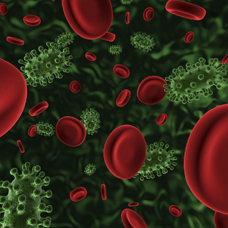
HIV – Prevention
Doing it Safer
Risk Reduction
we’re going to talk about different levels of risk for HIV. No one is perfect and everyone deals with risk in their lives in different ways and for different reasons. In the next section we’re going to give you some information and tips to keep.
No-Risk Activities
Transmission happens when the HIV virus gets into your bloodstream from someone else’s blood, cum, vaginal fluids, menstrual blood or breast milk. This means that there’s NO risk of HIV transmission from things like coughs, sneezes, mosquito bites, toilet seats, swimming pools, water fountains, sharing eating utensils or casual contact.
Other no-risk sexual activities include:
• Hugging/kissing
• Sensual massage
• Jerking yourself off (masturbation) is safe
• There are ways to lower your risk while having a hot time. Risk reduction means keeping yourself healthy so you can keep having sex, and keep enjoying it.
Safer Sex
Other than no-risk activities, there will always be some risk of HIV and STIs when you have sex. It’s important to think about what you want to do (or might want to do in the future) and get an idea of what the risks are before you make a decision in the heat of the moment.
Tips:
• Have a stash: Make sure you have a supply of the kind of safer sex materials you think you might want to use. Keep condoms, barriers (dental dams/plastic wrap), lube and gloves in an easily accessible place. Don’t just keep them at home, but think about what happens when you go out too.
• Be upfront: Inform a partner about what you will and won’t do sexually. This isn’t always an easy conversation to have, but it means that when you’re in the middle of things, you won’t have to stop the action.
• If you don’t have sex sober: Remember, for some people, when they are drunk and/or high it can be harder to make clear decisions and stick to them.
• Take care of the goods: Remind yourself that you need to care of your body as well as the body of the person (or people) you’re planning on hooking up with. Regular STI testing is an important component of good sexual health. You should also get an HIV test as part of your routine health care.
Making Safer Sex Easy and Fun
• Pillow Talk: Have the safer sex conversations during foreplay and the earlier stages of excitement, when you and your partner(s) will both be thinking clearer and able to make decisions. Fondling and rubbing while discussing safer sex can serve as a reminder that safer doesn’t make it any less hot. Be clear that you want safer sex.
• Put safer sex on the table: Keep safer sex supplies close to where you’ll be having sex and they will be visible to you and your partner(s). Some people do this as a way of avoiding having to actual talk about safer sex. If you put the stuff out in the open, your partner will get the message that you expect safer sex. If you do talk about it, having it out in the open can be an opening to raise the issue. The more comfortable you are with bringing up safer sex practices, the more likely you’ll be able to communicate confidently about how you like to have sex.
• Sexy, dirty and safe: Make safer sex appealing to you and your partner(s) by keeping it fun. Ask your partner to do three dirty things that involve safer sex. Experiment with new things and make safer sex exciting. There’s nothing better than being able to expand your sexual horizons while reducing the risks at the same time.
• Beyond rubbers: Make condoms a sexy and enjoyable part of sex for both yourself and your partner(s). Try putting on a condom with your mouth or ordering your partner to do it. Be careful with teeth, as not to tear or puncture the condom. Condoms come in all varieties of flavored, textured, colored and otherwise ‘upgraded’ forms – they’re not your everyday rubbers anymore.
• Staying hard: Know that some guys have difficulty using condoms. It is not unusual for a guy to lose his erection when he puts on a condom. This can create performance anxiety and embarrassment, and can lead some guys to have unsafe sex rather than risk losing their erection or not being able to perform. If your partner’s dick goes softer with the condom, let him know that’s no problem for you. Make light of the situation and use it as an opportunity to do more of what got him hard in the first place. Tell him to keep the condom on and you’ll play together to get him hard enough to fuck you.
• Staying strong: Some people feel that condoms are a barrier to pleasure and intimacy. Some guys like to cum inside their partners or have their partners cum inside them. Be prepared to assert your desire for safer sex if you have a partner who is pushing the boundaries and wants to have sex without a condom. Think of other ways to create intimacy, closeness, and pleasure that don’t require you to drop the condoms.
Community Resources & Links on the Internet
Community organizations and service providers for people living with HIV
• Toronto People with AIDS Foundation (PWA)
• AIDS Committee of Toronto (ACT)
• Women’s health in Women’s Hands—Centro de Salud Comunitario para Mujeres
• Centro para Gente de Habla Hispana / Centre for Spanish Speaking People (CSSP), HIV/AIDS Program
• HIV/AIDS Legal Clinic of Ontario (HALCO)
• Prisoners HIV/AIDS Support Action Network (PASAN)
• ASO411, an online resource through which you can find services in your community.
Websites with general information on HIV/AIDS
CATIE is Canada’s source for up-to-date, unbiased information about HIV and hepatitis C. CATIE connects people living with HIV or hepatitis C, at-risk communities, healthcare providers and community organizations with the knowledge, resources and expertise to reduce transmission and improve quality of life.
Provides practical and comprehensive information on all topics of interest related to HIV/AIDS. There are English and Spanish versions.






